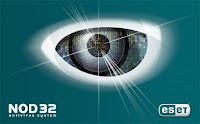Texas PC Repair Now Requires PI License
From its Texas Rangers to its enthusiastic take on the death penalty, the Lone Star State has long been known for its aggressive stance on law enforcement. Thanks to a strange new, law it's a sting that may soon be felt by a number of the state's computer-repair people.
A recently passed law requires that Texas computer-repair technicians have a private-investigator license, according to a story posted by a Dallas-Fort Worth CW affiliate .
In order to obtain said license, technicians must receive a criminal justice degree or participate in a three-year apprenticeship. Those shops that refuse to participate will be forced to shut down. Violators of the new law can be hit with a $4,000 dollar fine and up to a year in jail, penalties that apply to customers who seek out their services.
Some of the area's larger companies already employee technicians with PI licenses, a fact which generally doesn't apply to small computer repair shops.
Originally published on Gearlog .
Source:- www.pcmag.com
 RSS Feed
RSS Feed Twitter
Twitter





